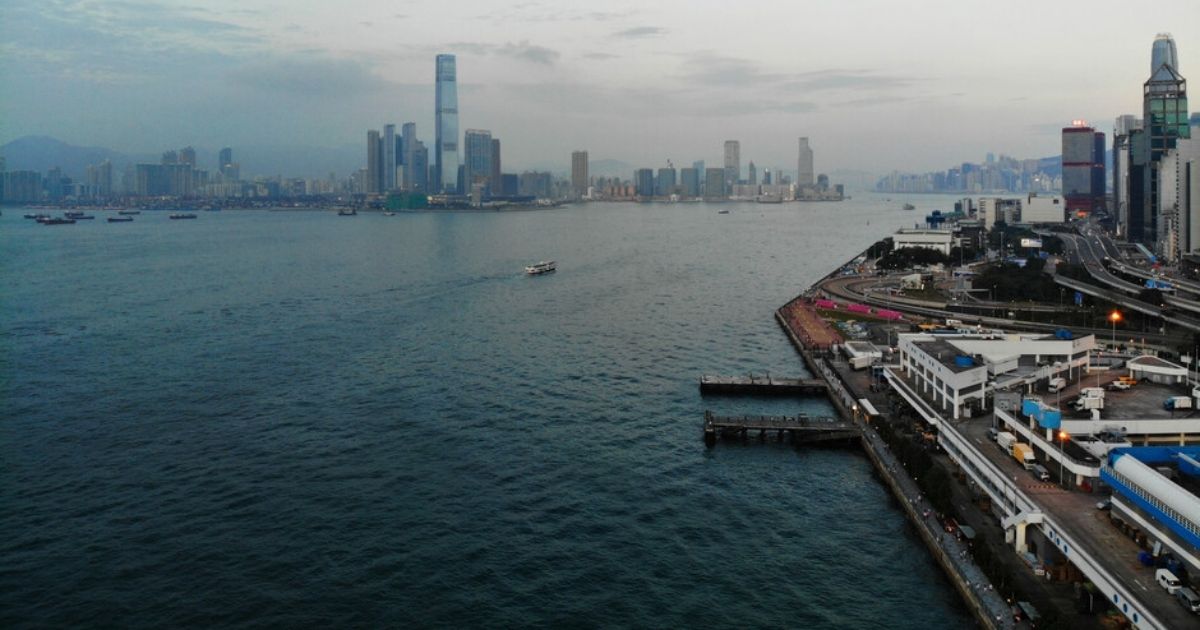The skyscrapers and urban development that have made Hong Kong the "Pearl" have also generated pollutants that affect the marine species that live in Hong Kong's coastal waters.
On-going climate change and dams along the Pearl River have also altered these coastal ecosystems. However, it is largely unknown in what ways they are altered, because we lack information about baseline conditions back then. "What were marine environments and organisms like in Hong Kong, say, 50 -- 100 years ago, when human activity was much more limited? How were they different from what we see today?" Dr Yuanyuan HONG, a postdoctoral fellow from the School of Biological Sciences, the Research Division for Ecology & Biodiversity, and The Swire Institute of Marine Science at The University of Hong Kong (HKU) raised the question.
Fortunately, young fossils can help to provide the answers. Dr Hong and her team used tens of thousands of small fossil shells preserved in sediment on the seafloor to reconstruct Hong Kong's marine ecosystem over the last ~50 -- 100 years. Using sophisticated biodiversity measures recently developed by co-lead author Professor Anne CHAO from National Tsing Hua University, Taiwan, Dr Hong discovered that climate and metal pollution have played major roles in shaping present-day marine communities in Hong Kong. The finding has recently been published in Anthropocene.
"Climate change, specifically weakening of the East Asian Summer Monsoon, has resulted in less rain and less discharge of freshwater from the Pearl River, and this has substantially impacted marine life in Hong Kong's eastern waters, such as in Mirs Bay and Sai Kung. In addition, metal pollution from wastewater and the antifouling paints used on ships have greatly altered marine communities in the central part of Hong Kong, such as Victoria Harbour," said the lead author Dr Hong.
Significant impact on rare species
"Hong Kong's eastern waters are much less polluted than the central and western waters. However, these ecosystems are also much more sensitive to climate change. Future anthropogenic warming may reduce global ocean circulation and this may enhance the East Asian Summer Monsoon. So, organisms in Hong Kong's eastern waters may be confronted by enhanced discharge from the Pearl River and resulting lower salinity, higher turbidity, and muddier environments in the near future. Our research indicates that these environmental changes will especially affect rare species. Most species in tropical and subtropical places like Hong Kong are rare, so the anticipated changes may have a profound impact," co-lead author Dr Moriaki YASUHARA from the School of Biological Sciences, the Research Division for Ecology & Biodiversity, and The Swire Institute of Marine Science at HKU explained.
Hong Kong is one of the largest coastal cities in the world and has one of the world's busiest ports. Metal pollution, most likely generated from wastewater and the antifouling paints used on ships, has affected marine life in Victoria Harbour, which is surrounded by Tsim Sha Tsui and Causeway Bay (two of the biggest downtowns) . "Hong Kong's western waters of the Pearl River estuary is resistant and resilient from climatic and anthropogenic changes rather surprisingly. It is also surprising that eutrophication and deoxygenation did not show any substantial effect on Hong Kong's marine ecosystem in our study. This may be because the Pearl River estuary and South China Sea in general are naturally rich in organic matter and nutrients from mega rivers and high precipitation, and also deoxygenation in Hong Kong is not too serious compared to other urbanised sea areas such as Chesapeake bay next to Washington DC, Tokyo Bay next to Tokyo, and Baltic Sea surrounded by many European cities." Dr Hong further elaborated.
"Hong Kong remains 'The Pearl' even in the sea, as these regions continue to harbour tremendously diverse marine life, but our research has shown that climate and human activities have changed our local marine ecosystem substantially in just 50 -100 years. Underwater change is more difficult to see, compared with deforestation or other modifications of the land," Dr Hong concluded.
Yet, small fossils can reveal the history of underwater change over past decades, centuries, or longer. "Empty shells on the seafloor allow us to 'time travel' to past marine ecosystems and determine the ways in which natural and anthropogenic environmental change have shaped marine communities." co-lead author Dr Paul HARNIK from Colgate University pointed out.
By The University of Hong Kong
Journal Reference:
Yuanyuan Hong, Moriaki Yasuhara, Hokuto Iwatani, Anne Chao, Paul G. Harnik, Chih-Lin Wei. Young fossil record reveals climate and pollution driven ecosystem turnover in an urbanized subtropical seascape. Anthropocene, 2021; 100304 DOI: 10.1016/j.ancene.2021.100304



